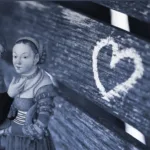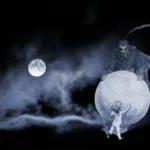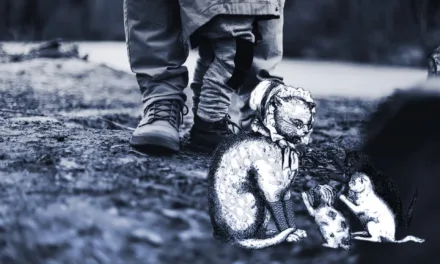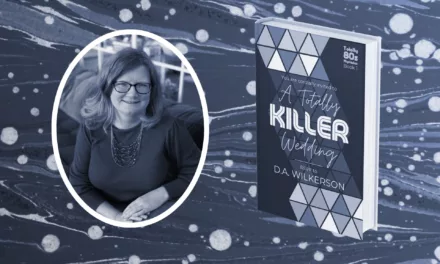
5 Helpful Tips for Writing Children’s Books

There’s a popular assumption that because they are often short and simple, that writing children’s books is easy. But nothing could be further from the truth. Writing for children takes care and skill. You not only have to have a great idea, but you also need to be able to bring it to life in a shorter word count and for a very specific target audience. Here are some things to keep in mind to make sure you write fantastic children’s literature.
Choose a genre and target age group
This may seem like self-explanatory advice, but it’s amazing how often authors choose the wrong genre or audience for what they’re writing. Genre and target audience are especially important when writing for children as you not only have to write within certain genre parameters, but you also have the consideration of age as well.
When you write for adults, you just have to make sure that you’re writing for an audience who will enjoy what you’re releasing. With children’s literature, age and literacy levels narrow this field even further. Middle-grade fiction, for example, is usually designed for readers aged 9 to 12, which covers a whole range of life experiences and reading abilities that aren’t a consideration in adult literature. Add genre into the mix, and you’ve got a very specific audience that you’re writing for.
These are the most common book groupings when writing children’s books:
Picture books
Picture books are typically written for children ranging from 1 to 4 years of age. School-aged children often enjoy picture books as well, but they’ll tend to gravitate more toward picture books with higher word counts or clever humour.
For very young children, board books will typically be their first introduction to books and reading, which will have very limited word counts – usually under 250 words. As readers enter preschool, picture books can be anywhere up to 1000 words with more sophisticated language. It’s still important to keep the language simple, however, as preschoolers will often try to read on their own, so it’s essential that the words are accessible.
As an additional note, if you’re writing a picture book for traditional publication, you do not have to have an illustrator lined up or know how to illustrate. Publishers prefer to receive picture book submissions as text only, and they will source the illustrators they think best suit your story and target audience.
Early reader books
Early reader books often come in two forms – education and entertainment. You’ll usually find them close to each other in bookstores, but their style is vastly different.
Writing children’s books for early readers is designed for those just starting school, usually for ages 5 to 7, where they are only just beginning to learn the skills needed for independent reading. Unlike picture books, these books are designed to be read without adult assistance.
Because early reader books are transition books, they are often highly illustrated, with a word count of 1,000-5,000 words.

Chapter books
Chapter books often tell more in-depth stories and, unlike early readers, are divided into chapters. They are designed for children who are more confident in their reading and no longer require adult supervision when reading.
The target age range for chapter books is 6 to 9 years, and while some of them may still contain illustrations, these illustrations tend to be decorative, rather than an integral part of the reading experience.
As these books are designed for more advanced readers, they tend to be longer than early reader books, capped at around 10,000 words, and begin to introduce more complicated vocabulary. You will start to see more non-fiction books included here, but fewer educational ones.
Middle-grade books
Middle-grade is where you’ll find greater variety in genre, style, length, and subject. It covers the greatest age range in reading development (traditionally 9 to 12) and is the first type of children’s literature that will also have overlapping appeal with adult readers.
With more diverse genre offerings than books designed for younger readers, middle-grade books will often have protagonists who are children. It’s the age of the protagonists that will often determine which age group the book will appeal to, so keep in mind that the language you use will need to be relevant and realistic to the age of your characters.
Middle-grade books introduce more challenging vocabulary, will rarely have illustrations unless for decorative purposes, and can vary in length from 20,000-60,000 words. Authors can also begin to take a few more risks when writing for this age group and start to include more scares, humour, and mystery than books designed for younger readers.
Young Adult novels
Young adult novels have no limit to their age appeal and are written for an older teenage audience with adult reading abilities. The appeal to the young adult market is usually due to a teenage protagonist, but many adults read and enjoy young adult novels too.
While many young adult novels deal with issues that teenagers face, like growing up, bullying, fitting in, etc., this is not a requirement. YA novels begin to push the boundaries of genre to include genre fiction like romance and horror, which can be elements of novels for younger readers but aren’t usually the primary genre.
While most young adult novels tend to sit comfortably between 60,000-90,000 words, with the introduction of new adult (which tends to include more adult themes than just YA), there is no ceiling on how long a young adult novel needs to be.
Write a good story, not a moral lesson
When writing children’s books, it’s easy to fall into the trap of assuming that you have to teach your readers some kind of moral lesson. While your story can have a moral, the most important thing is that it’s interesting and keeps your readers entertained.
Picture books and early readers might have the added consideration of reading ability to think about, but unless you’re writing a book specifically designed to educate, don’t get bogged down with heavy-handed lessons. If you have some wisdom you want to impart, it has to be a natural part of the story, and not something that you force down your readers’ throats.
Keep your characters age-appropriate
If you’re writing for a specific age group, make sure your readers can connect with your protagonist. Children like to read about characters who are like them – who have the same struggles and with whom they can share relatable experiences.
If you can’t put yourself in the mind of the age you’re writing for, it might be worth rethinking your target audience. You need to be able to not only understand the minds of the children you’re writing for but also render them realistically.

Read, read, read
To tune in to a great children’s book, you need to read widely from different genres. You need to think like your readers and know what entertains them. The best way to learn this is by consuming the same media they do.
The best way to learn how to write for children is from other writers. Read widely, study their styles, and learn from the way they express their ideas and how they write their protagonists. Read both the good and the bad examples of your chosen genre and audience. Keep notes and jot down what works in certain books and what doesn’t. You’ll never get to be a child again, but that doesn’t mean you can’t learn how to put yourself in their shoes.
Find beta readers who are children
The most important piece of advice once you’ve finished your book is to make sure that your target audience are the ones to give you feedback on your book.
Try reading your book aloud to some children in your target market. Perhaps you can read it to children at your local school, or library. If you have friends or family with children, ask if you can send them copies of your book and get some feedback.
You want to find out what they’re engaging with. What parts of your story are the most interesting to them? Are they asking questions to know more about the characters?
Getting feedback from the people who will be your readers is absolutely invaluable. You’ll know what to change and how to adapt your story to be more appealing to your target readers.






























